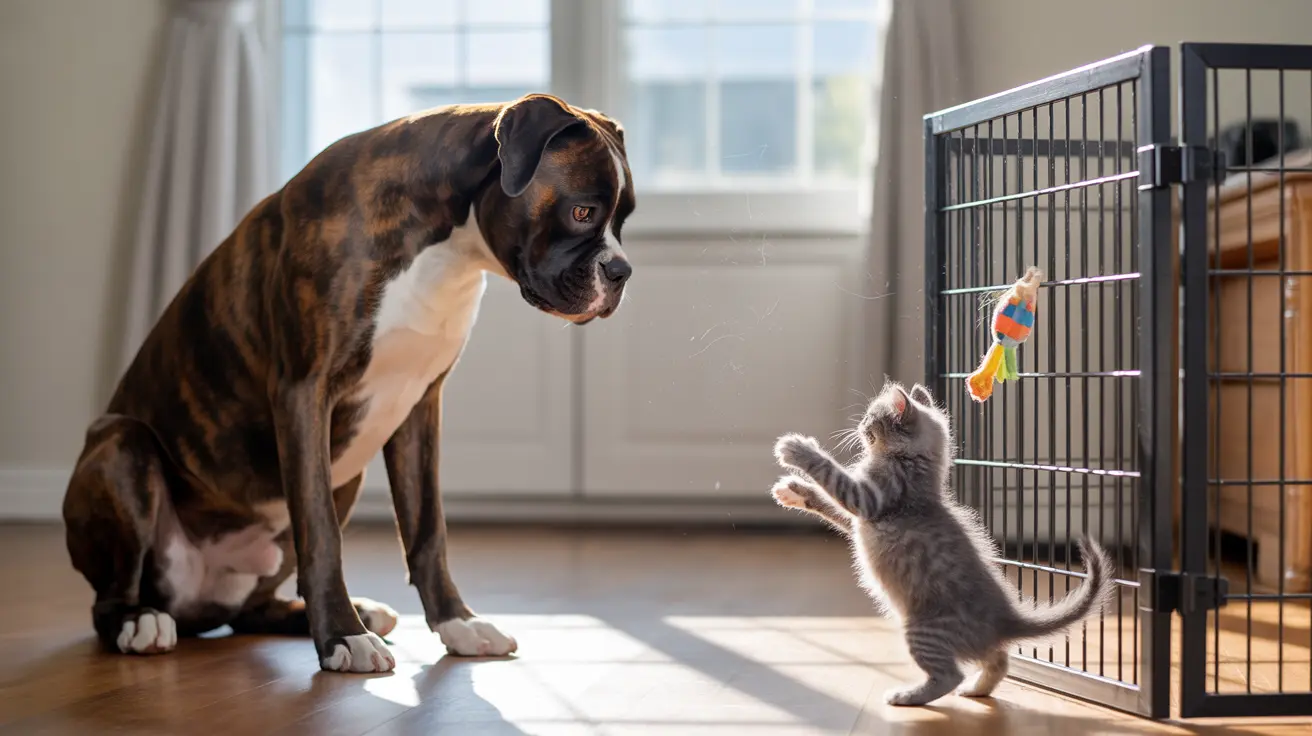Creating a Safe Environment for Both Pets
Before any introductions take place, it's essential to prepare your home properly. Set up a dedicated safe room for your kitten, complete with food, water, litter box, and comfortable hiding spots. This room should be completely inaccessible to your dog, serving as a stress-free sanctuary for the kitten to retreat when needed.
Install baby gates at strategic locations throughout your home. These barriers will allow both pets to see and smell each other while maintaining physical separation during the early stages of introduction.
Initial Introduction Strategies
Scent Exchange
Begin the introduction process by allowing both pets to become familiar with each other's scents. Swap bedding between the pets or use a soft cloth to gently rub each animal, then place it in the other's area. This helps create positive associations and reduces the surprise factor when they eventually meet face-to-face.
Visual Contact
Once both pets are comfortable with scent exchange, arrange supervised visual introductions through a baby gate or glass door. Keep your dog on a leash and at a distance where they can maintain calm behavior. Reward your dog with treats and praise for staying relaxed while viewing the kitten.
Managing Your Hyper Dog's Behavior
Exercise and Training
A tired dog is typically a calmer dog. Before any introduction sessions, ensure your hyperactive dog receives plenty of exercise to burn off excess energy. Incorporate daily training sessions focusing on basic commands like "sit," "stay," and "leave it." These commands will be invaluable during the introduction process.
Positive Reinforcement
Consistently reward your dog for calm behavior around the kitten. Use high-value treats and praise when they maintain composure and ignore the kitten's presence. Never punish your dog for showing interest in the kitten, as this can create negative associations.
Gradual Integration Process
Progress to controlled face-to-face meetings only when both pets show consistent comfort with visual contact. Keep these sessions brief initially, gradually increasing duration as both animals demonstrate calm behavior. Always supervise these interactions and be prepared to intervene if needed.
Watch for signs of stress in either pet. If your dog becomes overly excited or your kitten shows fear, end the session and try again later. Success often comes through multiple short, positive interactions rather than forced lengthy encounters.
Long-term Management and Success
Even after successful introductions, maintain supervision until you're completely confident in your dog's behavior around the kitten. This could take weeks or months, depending on your dog's personality and energy level. Continue providing separate spaces for eating, sleeping, and using the litter box to prevent resource guarding or conflict.
Frequently Asked Questions
How can I safely introduce my hyperactive dog to a new kitten without causing stress or fear?
Start with separate spaces and gradual exposure through scent exchange and visual contact through barriers. Always supervise interactions, keep your dog leashed, and reward calm behavior consistently.
What steps should I take to prepare my home for introducing a hyper dog to a kitten?
Create a safe room for the kitten with all necessary supplies, install baby gates, and ensure multiple escape routes and elevated spaces for the kitten throughout your home.
How long does it usually take to successfully introduce a hyper dog to a kitten?
The process typically takes anywhere from several weeks to a few months, depending on both pets' personalities and your consistency with the introduction process.
What are the best training commands to teach my hyper dog before meeting a kitten?
Focus on "sit," "stay," "leave it," and "come." These commands help maintain control during interactions and ensure the kitten's safety.
When should I seek professional help during the introduction of a hyper dog to a kitten?
Seek professional help if your dog shows aggressive behavior, cannot maintain calm around the kitten despite training, or if either pet displays significant stress or fear during introductions.






